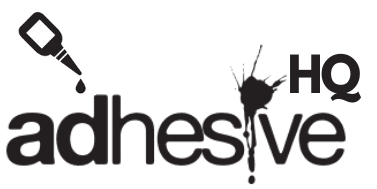How to Break Up Adhesion with Physical Therapy
Adhesions can form in your muscles and tissues after surgery, injury, or prolonged inflammation. These internal scars can limit your mobility, cause discomfort, and even lead to chronic pain. Fortunately, physical therapy offers a variety of techniques to break up adhesions and restore proper function to your body. In this post, we’ll explore the best ways physical therapists help manage and reduce adhesions, and why getting treatment early can prevent long-term complications.
Key Takeaways
- Physical therapy is one of the most effective methods for breaking up adhesions.
- Techniques like manual therapy, myofascial release, and ultrasound therapy can reduce scar tissue and improve mobility.
- Early treatment of adhesions is key to avoiding pain, limited range of motion, and other complications.
What Are Adhesions?
Adhesions are bands of scar tissue that form between two surfaces in your body, typically after surgery, injury, or inflammation. These scar tissues bind muscles, tendons, or other organs together that are normally separate, which can lead to reduced mobility, pain, and stiffness.
When adhesions form, they can restrict movement and create a pulling sensation that limits your ability to function normally. That’s where physical therapy comes in—by using specialized techniques to break up adhesions, you can reduce pain and increase your range of motion.
How Can Physical Therapy Break Up Adhesions?
1. Manual Therapy Techniques
Manual therapy is a hands-on technique used by physical therapists to manipulate the soft tissues in your body. It includes different methods such as:
Massage Therapy
Massage therapy is one of the most effective ways to break up scar tissue and adhesions. By applying pressure to the affected area, physical therapists can help realign the muscle fibers and encourage blood flow, which promotes healing.
Myofascial Release
In myofascial release, your therapist will target the fascia, the connective tissue that surrounds your muscles. When this fascia becomes stiff due to adhesions, it can limit your movement and cause discomfort. Myofascial release helps to soften and stretch the fascia, breaking up the adhesions that are binding it.
Graston Technique
The Graston technique uses specialized instruments to help therapists identify and break up adhesions beneath the skin. By applying controlled pressure with these tools, the therapist can stretch and realign scar tissue in the affected areas. This technique is especially helpful for patients recovering from surgery or dealing with chronic scar tissue.
2. Stretching Exercises
Guided stretching exercises are another core component of physical therapy for breaking up adhesions. Stretching helps to elongate the tissues and scarred areas, making them more flexible over time. This reduces the pulling sensation that adhesions often cause.
Physical therapists may recommend specific dynamic stretches and static stretches tailored to your condition. The goal of these exercises is to gradually improve your range of motion without causing further injury.
3. Ultrasound Therapy
Ultrasound therapy uses sound waves to penetrate the tissues, increasing blood flow and heating the tissues below the surface. This technique is often used by physical therapists to break down scar tissue and adhesions, as the heat softens the tissues, making them easier to manipulate through manual therapy and exercises.
This therapy is particularly effective in cases where the adhesions are deep within the muscle tissue, as it promotes healing in areas that are hard to reach with other techniques.
4. Dry Needling
Another advanced technique for breaking up adhesions is dry needling. This involves inserting thin needles directly into the affected muscles or scar tissue. The needles create tiny injuries, which stimulate the body’s healing process and help break down adhesions over time.
Dry needling also targets trigger points, which are tight knots in the muscles often associated with adhesions. When these knots are released, patients can experience immediate relief from pain and stiffness.
5. Electrical Stimulation
Electrical stimulation, or e-stim, involves placing electrodes on the skin near the site of the adhesions. A small electrical current is then applied, which helps increase blood circulation to the area and reduce pain.
This method is especially useful for breaking up deep adhesions that might not respond as well to manual therapy. The increased blood flow helps nourish the tissues and promotes healing, which can ultimately reduce the severity of adhesions.
Learn How to Break Up Your Adhesions with Help from Whatcom PT
At Whatcom PT, breaking up scar tissue and adhesions is one of our specialties. Our team of licensed physical therapists uses evidence-based techniques like manual therapy, ultrasound therapy, and dry needling to help patients regain their mobility and reduce pain.
Whether you’re dealing with adhesions from a recent surgery, an injury, or chronic conditions, we tailor our treatments to meet your unique needs. By following a customized plan, you can expect significant improvements in flexibility, strength, and overall well-being.
Why You Should Seek Physical Therapy for Adhesions
If left untreated, adhesions can lead to severe complications, including:
- Chronic pain
- Reduced range of motion
- Muscle weakness
- Limited flexibility
- Joint dysfunction
Seeking physical therapy early can prevent these issues from worsening and improve your quality of life. The sooner you start treatment, the easier it is to break up adhesions and prevent them from becoming more rigid and difficult to manage.
Request Free Screening at Whatcom PT
Are you experiencing stiffness, pain, or reduced mobility due to adhesions? At Whatcom PT, we offer a free screening to assess your condition and recommend the best physical therapy treatment for you.
During your screening, a licensed therapist will evaluate your range of motion, discuss your medical history, and create a plan to help break up your adhesions. This initial screening is essential for identifying problem areas and ensuring you get the personalized care you need.
Quick Links
If you’re interested in learning more about how physical therapy can help break up adhesions, check out our Ferndale Location and Blaine Location pages for details on our services and therapists.
Frequently Asked Questions (FAQs)
What Are Adhesions and Why Do They Form?
Adhesions are bands of scar tissue that form between tissues and organs after injury, surgery, or chronic inflammation. They form as part of the body’s natural healing process, but they can become problematic when they restrict movement or cause pain.
Can Physical Therapy Completely Eliminate Adhesions?
Physical therapy can significantly reduce the severity of adhesions and improve mobility, but it may not always eliminate them entirely. The goal of therapy is to improve flexibility and range of motion while reducing pain.
How Long Does It Take to Break Down Adhesions?
The timeline for breaking down adhesions depends on their severity and location. Some patients may see improvements after just a few sessions, while others may require several weeks or months of regular therapy to achieve lasting results.
Is Treatment for Adhesions Painful?
While some discomfort may be felt during physical therapy sessions—especially with techniques like deep tissue massage or dry needling—most patients find the treatments manageable. The goal is to reduce pain and stiffness over time, so any discomfort is usually temporary.
What Happens if Adhesions Are Left Untreated?
If left untreated, adhesions can worsen over time, leading to chronic pain, muscle weakness, and limited joint function. This is why early intervention with physical therapy is crucial.

